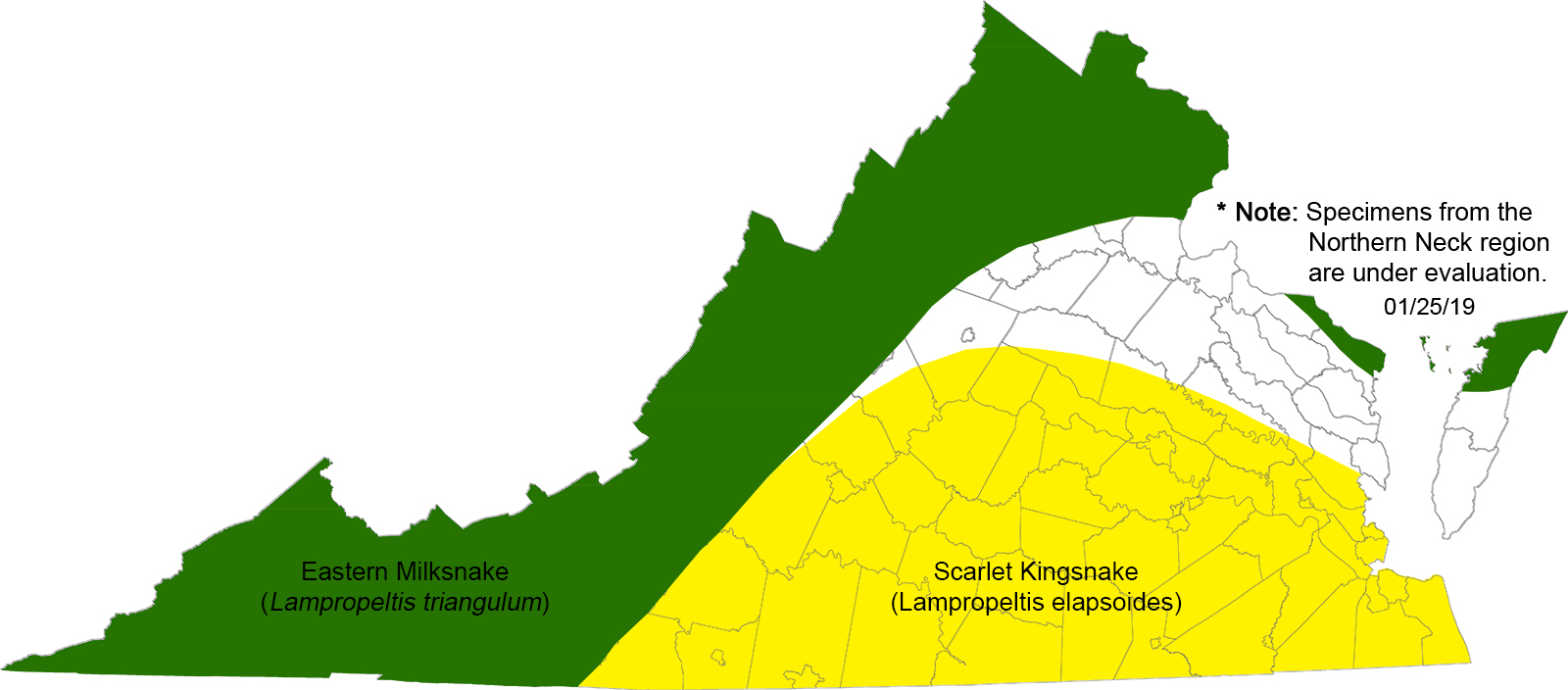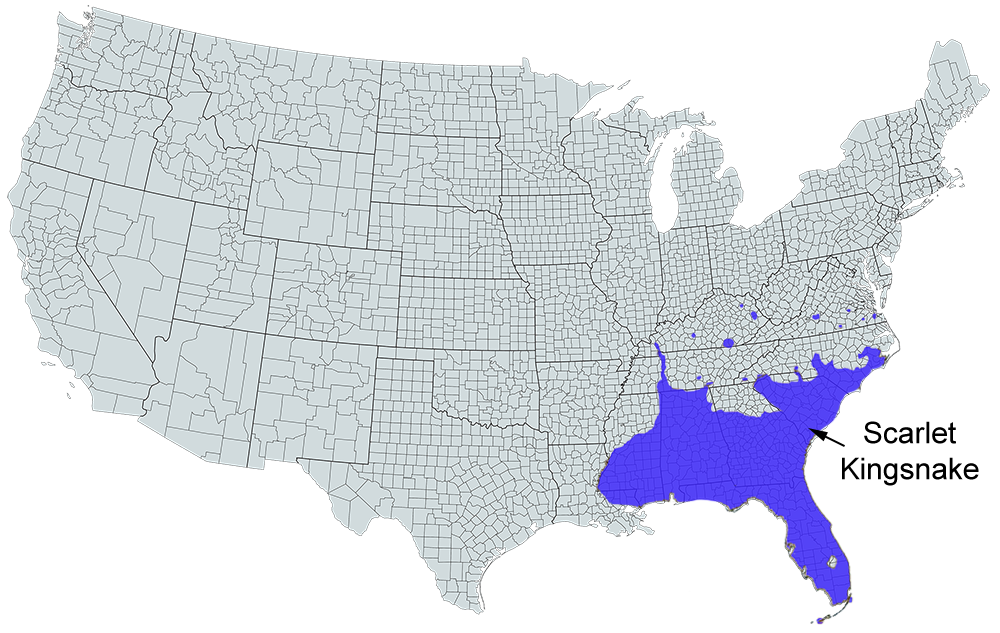Scarlet Kingsnake
Lampropeltis elapsoides
** Harmless **
Common Name: |
Scarlet Kingsnake |
Scientific Name: |
Lampropeltis elapsoides |
Etymology: |
|
Genus: |
Lampropeltis is derived from the Greek words lampros which means "radiant" and pelta meaning "small shields". |
Species: |
elapsoides |
Vernacular Names: |
|
Average Length: |
14 - 20 in. (36 - 51 cm) |
Virginia Record Length: |
|
Record length: |
27 in. (68.6 cm) |
PHYSICAL DESCRIPTION: This snake is reddish with yellow (or whitish) and black bands that may or may not completely encircle the body; every other band is black. Checkered board belly pattern is not uncommon. the snout is reddish *1006*. Because the Harlequin Coralsnake (Micrurus fulvius) does not occur in Virginia, the incomplete banding in many individuals is theorized to be the result of a lack of mimicry pressure. The snout is red and the yellow (or whitish) rings are separated from the red by black. Scales are smooth, in 19 rows at mid-body; anal single. Young are 5-8 inches (13-20 cm) long at hatching; adults average 14-20 inches (36-51 cm) long; the longest specimen recorded was 28 inches (68.6 cm) *883,11523*.
REPRODUCTION: Scarlet Kingsnakes are oviparous. The female usually lays between 4-12 eggs in rotting wood and beneath rocks and logs; some eggs may be buried several inches deep in the soil. The eggs are usually laid in the early summer. They are creamy-white and slender and most of the eggs adhere to one another. The eggs usually hatch in 2-2.5 months *1006*.
BEHAVIOR: This species is secretive, and is adept at working its way beneath bark, logs, rocks, and other hiding places. They are seldom seen in the open except at night or after heavy rains. Diet is primarily lizards and their eggs, but will also consume small snakes and rodents.
ORIGIN: Native *1006*.
POPULATION PARAMETERS: The longevity record of this species is 22 years and 4 months *11523*.
AQUATIC/TERRESTRIAL ASSOCIATIONS: Potential predators include skunks, opossums, and raccoons *1006*.
References
- 883 - Conant, R., 1975, A field guide to reptiles and amphibians of Eastern and Central North America, 429 pgs., Houghton Mifflin Co., Boston, MA
- 1006 - Linzey, D.W., M.J. Clifford, 1981, Snakes of Virginia, Univ. of Virginia Press, Charlottesville, VA
- 11523 - Thorp, T.J., 2001, Personal Communication, Expert Review for GAP Analysis Project, Three Lakes Nature Center and Aquarium
For additional information see: Discovery of a Population of Scarlet Kingsnakes (Lampropeltis triangulum elapsoides) in the Virginia Piedmont
Photos:
*Click on a thumbnail for a larger version.
Verified County/City Occurrence in Virginia
Bedford
Buckingham
Charles City
Charlotte
Chesterfield
Nelson
New Kent
Pittsylvania
Southampton
Sussex
CITIES
Chesapeake
Suffolk
Virginia Beach
Verified in 10 counties and 3 cities.
* PLEASE NOTE: Due to recent genetic work on Lampropeltis triangulum (Eastern Milksnake) and Lampropeltis elapsoides (Scarlet Kingsnake) the below map depicts the currently known distributions of these species. Although their ranges overlap along the eastern slope of the southern Blue Ridge Mountains, there is no genetic evidence indicating the two species interbreed.

U.S. Range























